Reading the Collections, Week 12: Every Building on the Sunset Strip
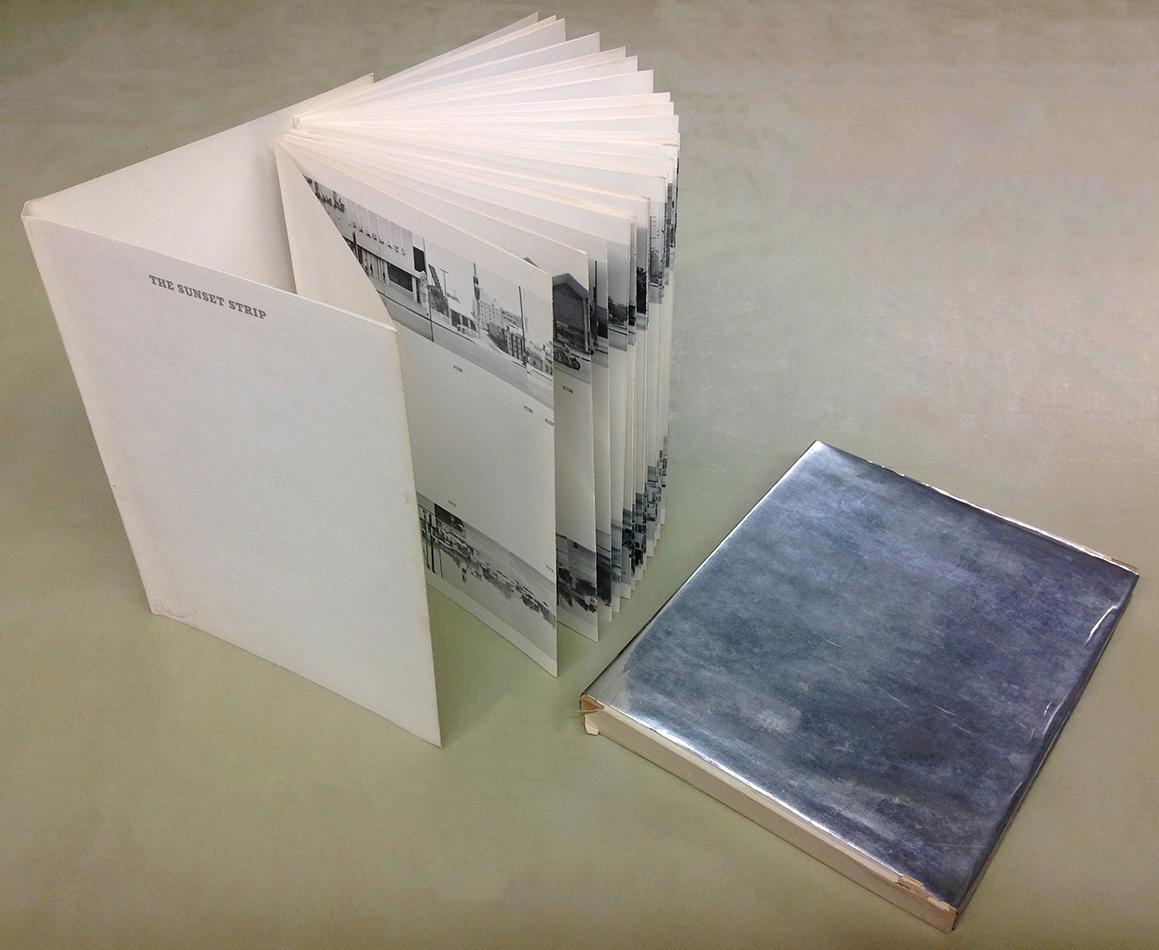
Working with the Photographic Collection, it may seem self-evident that I prefer to read books with pictures. So when asked to read a book from the collections I wracked my brain about where I should start. Since we have started building the Photo Book Collection, I have seen several stunning examples of large, colourful, glossy, and impressive artists’ books showcased for visitors, students and academics. However, one had always intrigued me. Edward Ruscha’s 1966 artist’s book and topographical survey of Every Building on the Sunset Strip is a mighty little accordion-style book, which unfolds to nearly 8 metres long.
The narrative itself is laid out in a continuous stream of images meticulously pasted together from numbers 8024 to 9176 Sunset Blvd near Hollywood, California. Written underneath the buildings is only their address or the name of the crossroads. The south side of the street (even numbers) runs along the top edge of the page, and the north side of the street (odd numbers) runs upside down along the bottom edge.

There was a beautiful simplicity to the idea, photographing every building, with no apparent bias or glitz and glamour, just showing the Strip how it was. But now, of course, it has been unintentionally copied a million times over, in nearly every town and city around the world thanks to Google Street View. But this small (yet very long) monochrome book gives us a nostalgic view of one of the most famous streets in the world.
Initially, when I approached the book, I did not even think about these images being nearly half a century old! Without doing a full rephotography series, I thought I might try to recognize some buildings.
Having visited Southern California several times and walked up and down the Sunset Strip I was intrigued to see the stark contrast to what visitors can experience today. Throughout Ruscha’s book you see relatively small buildings and houses; although many of these residential homes appear to be boarded up, it is an area on the brink of major changes to the streetscape.
Having said that, there are a few landmarks I wanted to find.
The famed Roxy Theatre (9009 Sunset Blvd) didn’t open till 1973, the building is there. It was called ‘The Phone Booth’ and according to their signage appears to be specializing in ‘Beautiful Girls’ and ‘Exotic Burlesk’.
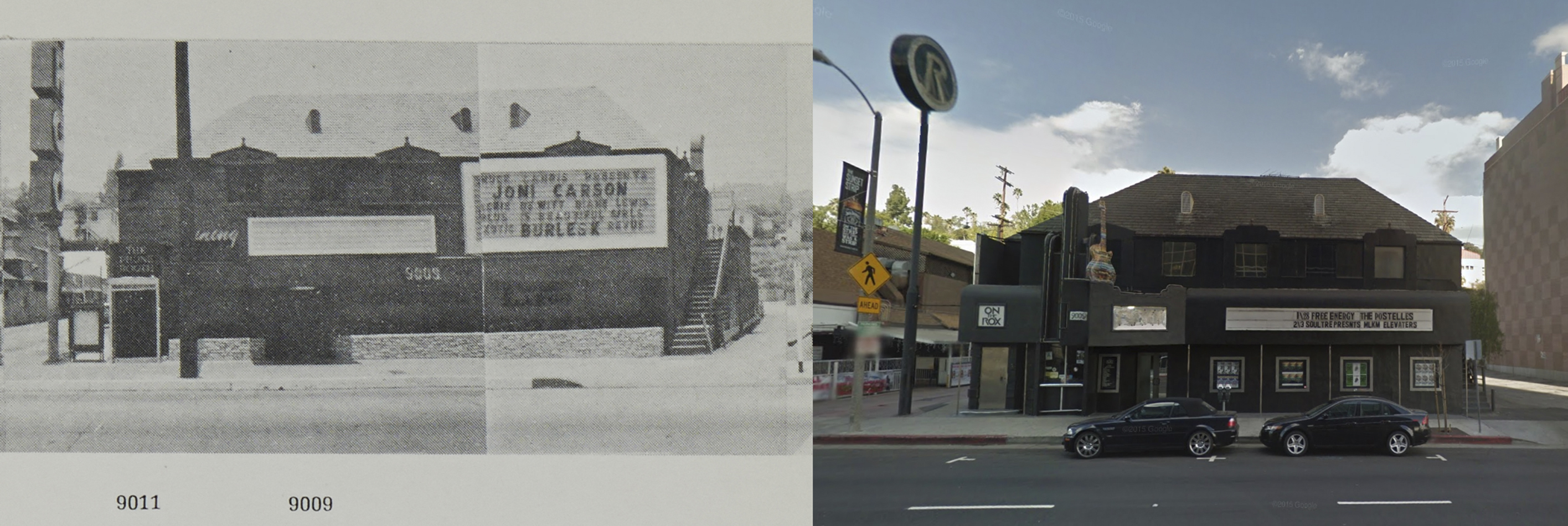
The Viper Room (8852 Sunset Blvd), which opened in 1993 appears much the same – the unique stone façade can still be seen today, albeit under a layer of black paint fitting the overall feel of the building and new name. I think it was the Melody Room back in 1966, which had been a small jazz venue since the 40’s. Although according to the Rock Cellar Magazine it was boarded up to look rather shady in the 1970’s when it had an equally shady name of ‘Filthy McNasty’s’.
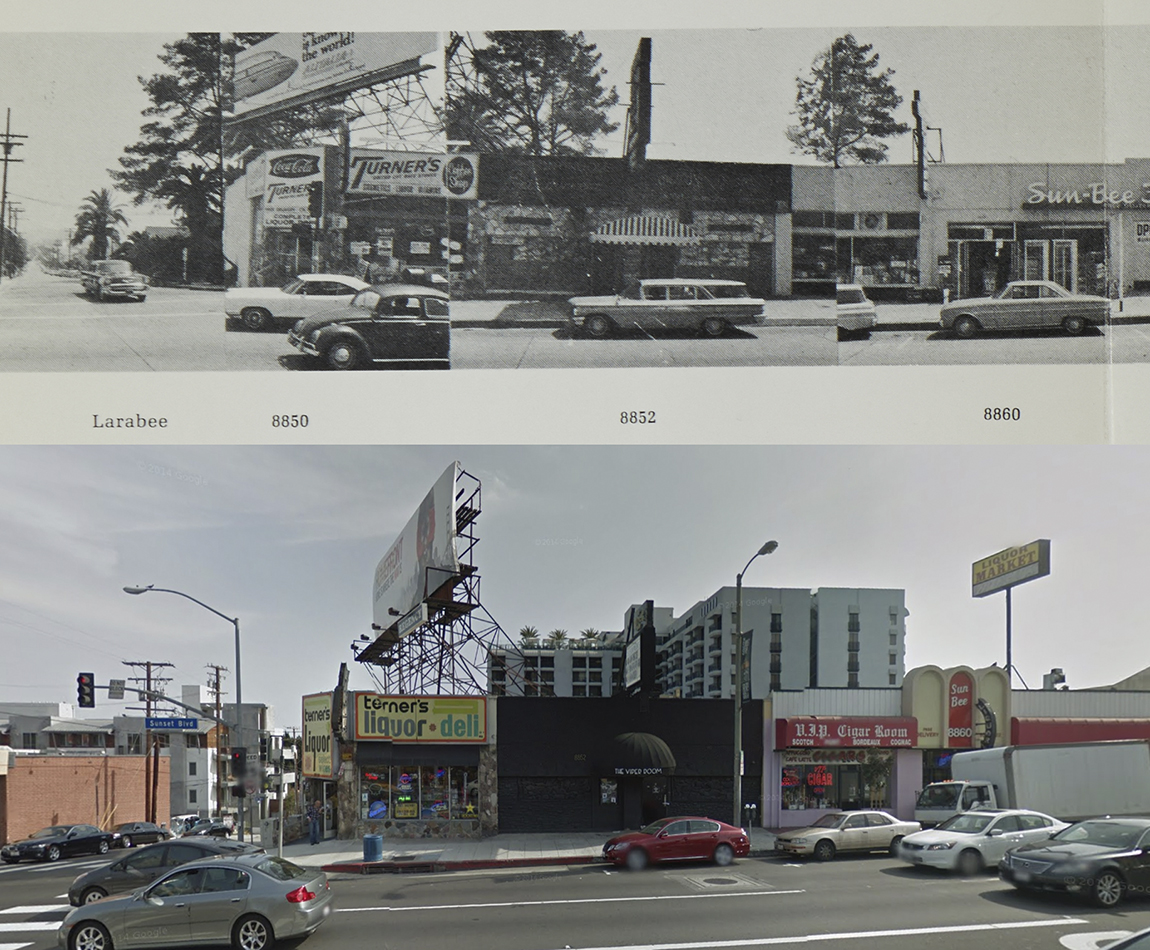
I had always thought the House of Blues (8430 Sunset Blvd) at North Olive Drive was one of the most historic buildings on the strip, however in 1966 it was just an empty lot with some hand painted signs, posters, and a large empty billboard.
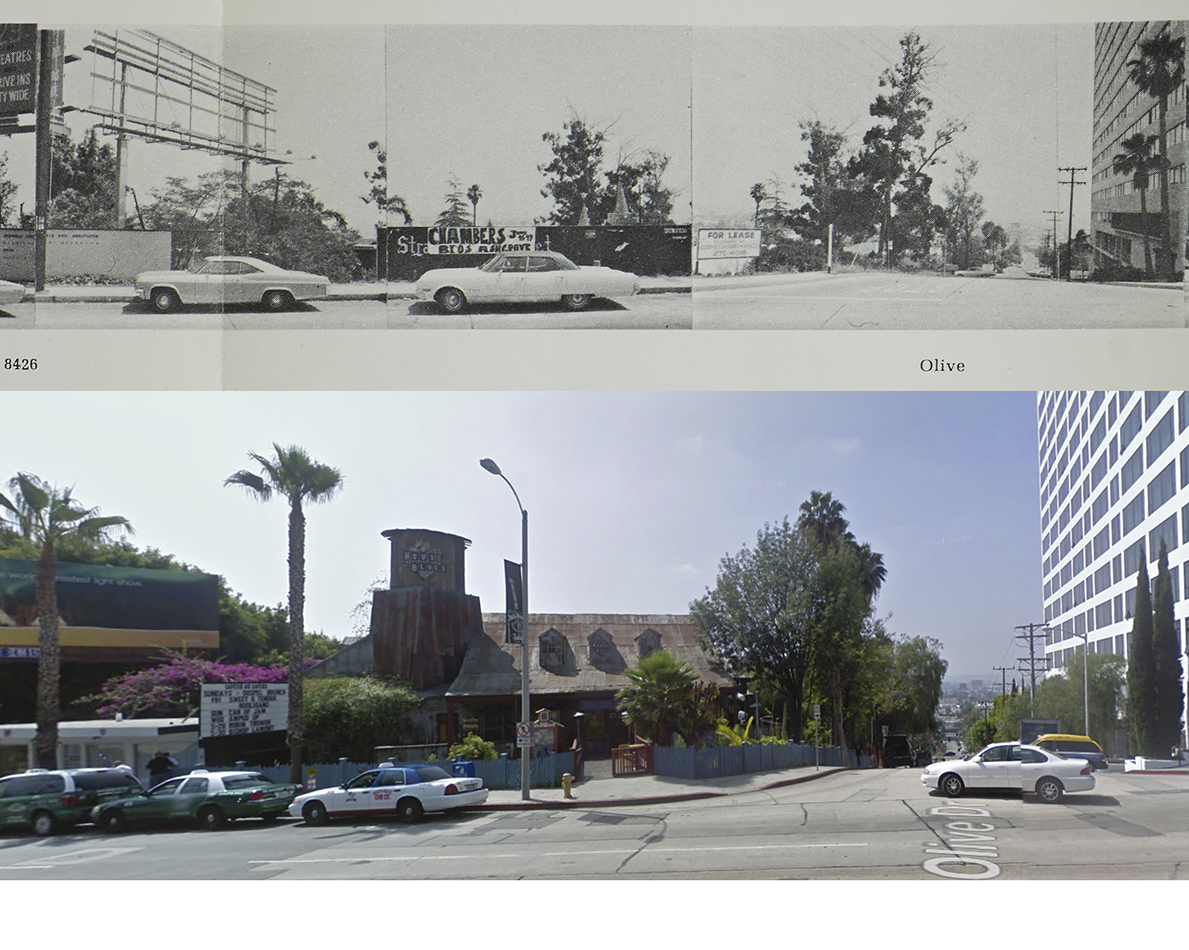
If one is more into comedy, we can take a short reprieve from the music scene on the Sunset Strip for a moment and look across the street. Directly across from that empty lot was what, in a few years, would be home to The Comedy Store (8433 Sunset Blvd), and the premier stage for all stand-up comedians. Until 1957 the address was occupied by Ciro’s nightclub, yet another popular music venue since the 1940’s, which famously hosted John F Kennedy for dinner on his first visit to LA. Interestingly, comedian Redd Foxx’s name appears on the front signage in 1966, perhaps hinting at the future direction of the venue.
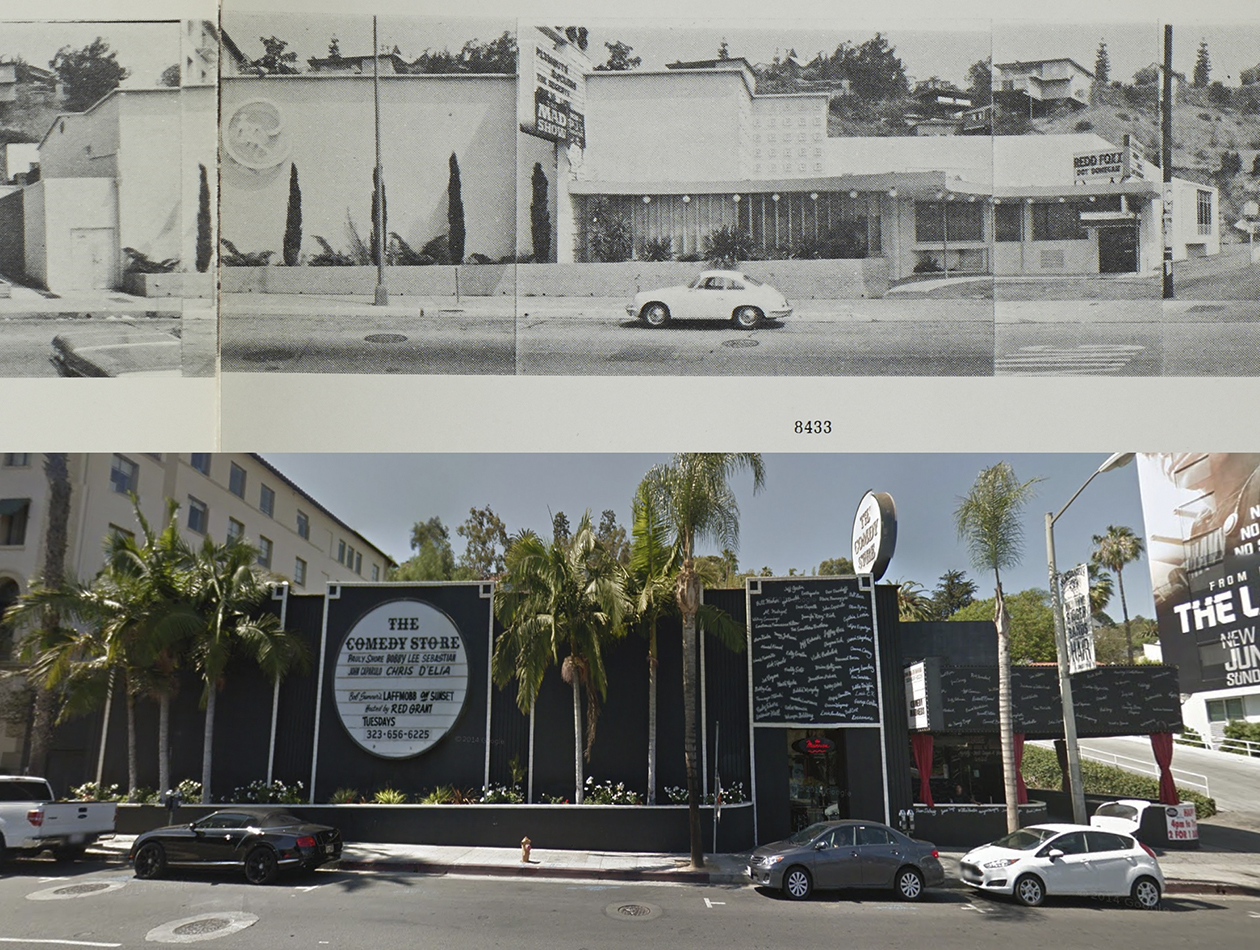
Perhaps the most famous building on the Sunset Strip, Whisky a Go Go (8901 Sunset Blvd) is there, cluttered with advertisements and posters as much then as it is now. In 1966 the venue had only been open for two years, but it would serve to be a springboard for so many bands of that era. It took a bit of late night internet sleuthing, but thanks to the Archives of California register of Ruscha’s work, I found that Ruscha began shooting the Sunset Strip in June of 1966 with his Nikon mounted on the back of his pick-up truck. Coincidentally, that very June, Whisky a Go Go’s band in residence was Van Morisson’s Them with a still unknown, fledgling group called The Doors as their opening act.

Feeling nostalgic, I think I need to start planning another trip to Southern California.
Rachel Nordstrom
Photographic Research & Preservation Officer
This is such an important, fascinating, wonderful book! And there are so many angles from which you can think about the content... Plus there's even more great Ed Ruscha to explore in the Photo Book Collection! I highly recommend it.
[…] on display was the photo book Edward Ruscha’s 1966 artist’s book and topographical survey of Every Building on the Sunset Strip – which is a bit of a challenge to handle at nearly 8 metres […]